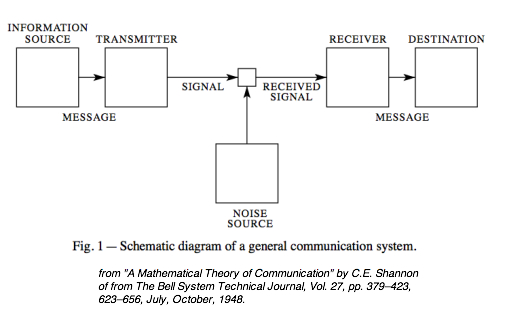A Model of Communication
A Model of Communication
Van Veenen calls our attention to a well-known model for explaining communication introduced by Shannon in the late 1940s based on his work at Bell Labs. A simplified version of this appears in the Atlas Black chapter as well.

As van Veenen explains,
The model identifies the following components of a communication process. The information source is the person (or system, or organization) that wants to convey a certain understanding. The understanding is encoded into a message. This is sent via a transmitter, which could be a computer, as is the case in online dispute resolution, but it could also be sent by mail or verbally. Ideally, the encoded message would fit the transmitter: all meaning that is to be conveyed is actually encoded into a message that can be sent using the chosen device...
Next, the transmitter transforms the message into a signal, which is transferred to the receiver. During the transfer, the signal may be affected by noise: factors that reduce the quality of the signal. Some media may be more prone to noise than others, and the effects of noise may range from a slight loss of information to a total loss of the signal. The signal, possibly affected by noise, is decoded by the receiver, and then the destination decides what to make of the message: what is its meaning, and what are the implications, and what are the consequences of the message.
(pp 12-13)
Putting it Into Context
Here's another illustration of this communication system, this time tailored to human communication using communication technologies. You'll notice that it includes additional elements such as a feedback channel from the receiver back to the sender and more awareness of the potentially differing contexts of the sender and receiver.
Licensed under the Creative Commons Attribution Non-commercial No Derivatives 3.0 License
For Educational Use Only
